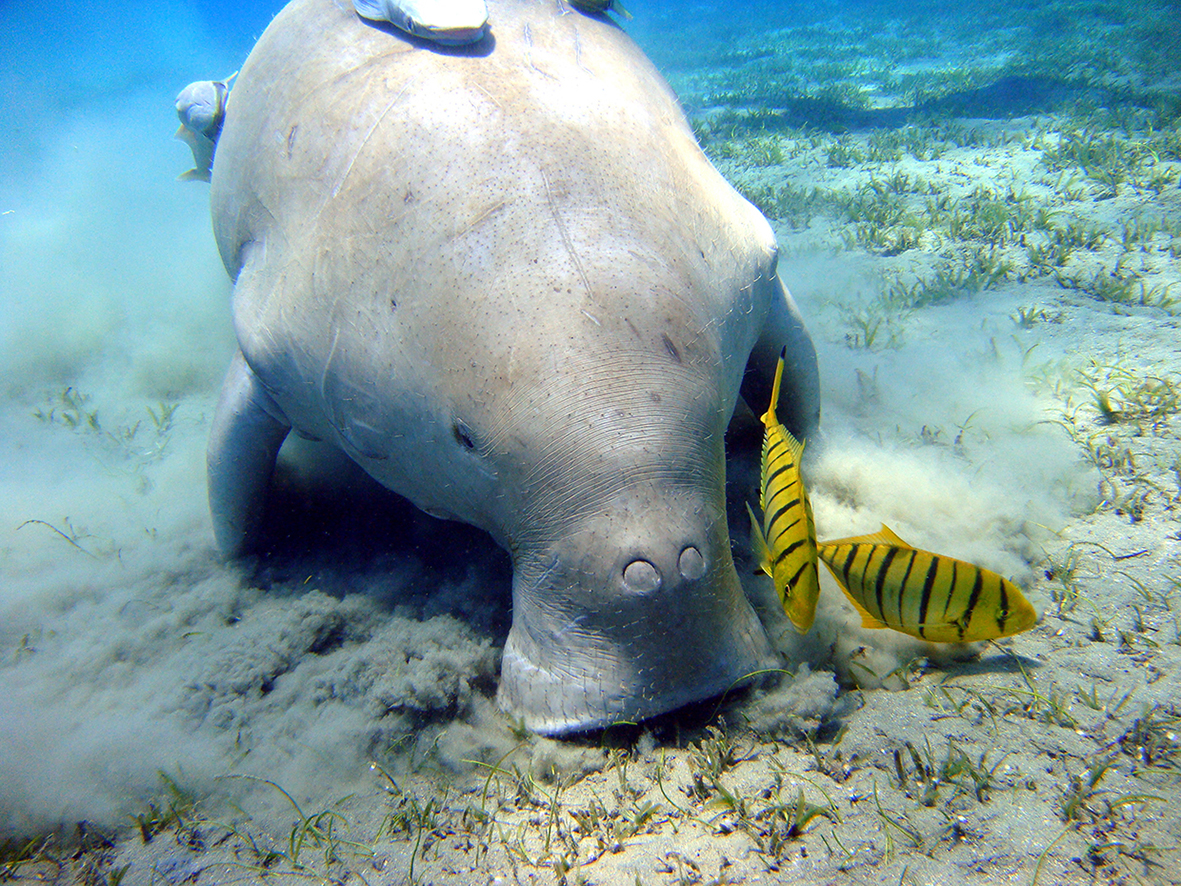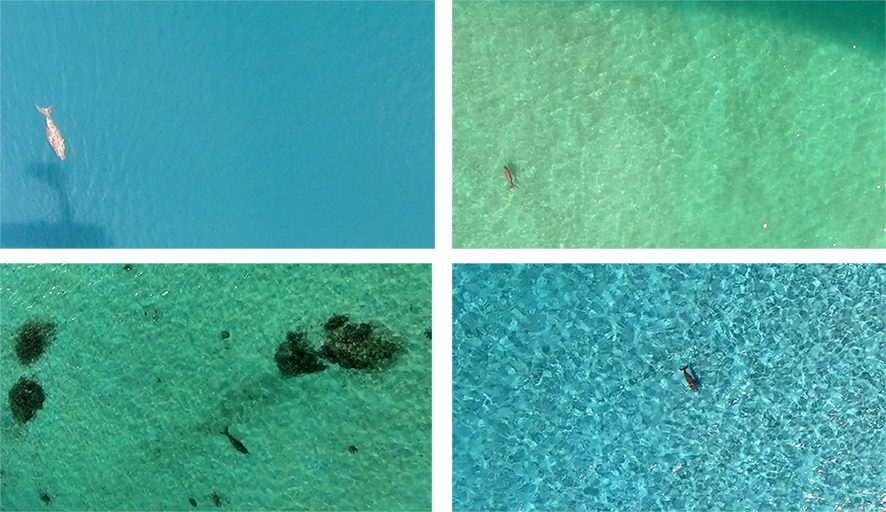9 August 2021
Better protection of marine megafauna through social networks and artificial intelligence
Two digital tools for biodiversity

The rise of artificial intelligence
For several years now, deep learning has been developing in many fields. This form of artificial intelligence applied to pattern recognition has become an essential tool for the automated remote monitoring of animal populations using photographs, videos or even sounds.
The performance and accuracy of species recognition algorithms are dependent on their learning capacity, i.e. the number and variety of images with which researchers are able to feed them. For rare and endangered species, aerial video monitoring programmes are proving very useful for land-based census, as is the case for elephants, and have recently been extended to the marine domain and its surface megafauna, mainly mammals.
The marine environment issue
How can deep learning be used for rare marine species such as the dugong, or stealthy species such as sharks, for which few images are available? In New Caledonia, research is currently focused on dugongs, sharks and sea turtles, as they are the subject of specific action and protection plans, at the interface between political, societal, economic and environmental issues.
The acquisition of very large quantities of images to improve the performance of automated recognition algorithms is therefore a major challenge for these species, for which aerial monitoring is still limited and provides only a small number of observations.
Dugong photographed during an aerial reconnaissance © Marbec.
Seaplane used for aerial reconnaissance flights of marine megafauna in New Caledonia © David Mouillot. Marbec
Photo and video recording system used during aerial surveys of marine megafauna in New Caledonia, mounted under the seaplane © David Mouillot. Marbec.
Aerial photo of a sea turtle, indicated by the red arrow. New Caledonia © Marbec
Aerial photo of a manta ray, indicated by the red arrow. New Caledonia © Marbec
Aerial photo of a shark, indicated by the red arrow. New Caledonia © Marbec
Board on a survey flight!
Compilation of aerial overflight images over the New Caledonian coasts showing some species of megafauna. These images are shot on board seaplanes or using remote-controlled drones. Good flight !
The contribution of social networks
The originality of the approach presented in this study is to demonstrate the potential of videos available on social networks, as a complement to aerial video monitoring, to optimise and train deep learning models to detect marine megafauna.
Rare or endangered species of marine megafauna are indeed the subject of abundant activity by the general public on social networks. This spontaneous production of images and videos is encouraged by the joint development of ecotourism, inexpensive digital devices such as GoPro cameras or drones, and broadband Internet.
Dugong, Dugong Dugon in open sea © N.Barraque. Monaco Explorations
An unprecedent database
In this study applied to the New Caledonian dugong, the exploitation of these resources has made it possible to build an unprecedented database. Indeed, more than a thousand images from six regions of the world covering the dugong’s range were collected on the web. These images from social networks are of limited value for in situ monitoring, due to the lack of precise geolocation information, but their major interest is to contribute to the constitution of an enriched and solid database for the optimisation of deep learning models and the automated detection of dugongs.
A new and efficient method and a hope for conservation

